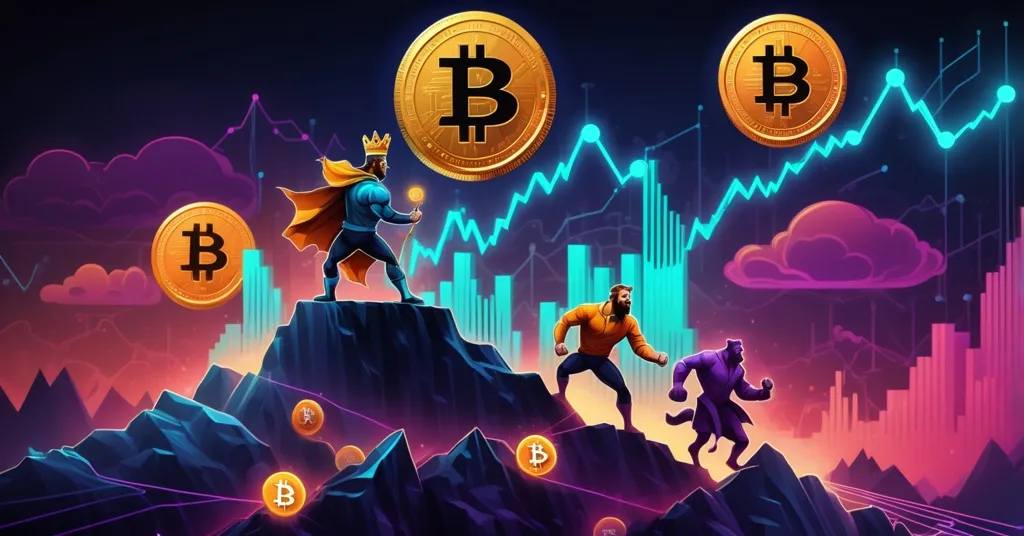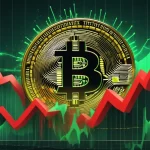XRP, Plasma, and Cardano Surge 3% in Crypto Market Rally on September 29

Crypto Price Predictions: XRP, Plasma, and Cardano Ride Market Surge on September 29
On September 29, the cryptocurrency market saw a 2.5% jump in total capitalization, igniting fresh optimism across the board. XRP, Plasma ($XPL), and Cardano ($ADA) are grabbing headlines with bullish forecasts, fueled by ETF speculation, innovative tech, and whale buying—though the shadow of volatility looms as always.
- Market Boost: Total crypto market cap rises 2.5%, setting a positive tone.
- XRP Momentum: Up 3.4% in 24 hours, with sights on $5 by 2025 amid ETF hopes.
- Plasma Hype: Bitfinex-backed stablecoin network targets $3 by year-end despite recent dip.
- Cardano Strength: Gains 3% daily, eyeing $4 with whale activity and ETF potential.
Setting the Stage: A Market Ready to Pop?
The crypto space is buzzing with a 2.5% spike in market cap on September 29, a modest but meaningful uptick that hints at a potential shift in sentiment. While Bitcoin remains the bedrock of decentralized value—still hovering as the ultimate store of wealth with unmatched security—altcoins are stealing some of the spotlight. Macro factors like cooling inflation fears and whispers of regulatory clarity in the U.S. add fuel to the fire, but let’s not forget the elephant in the room: crypto’s notorious mood swings. Against this backdrop, XRP, Plasma, and Cardano are positioning themselves as contenders in what could be an early altcoin season. Are they poised to outshine Bitcoin’s steady grind, or is this just another hype cycle waiting to crash? Let’s break it down with a clear eye and no sugarcoating.
XRP: ETF Dreams vs. Regulatory Nightmares
XRP, the token tied to Ripple, is making waves with a 3.4% gain in just 24 hours, sitting at $2.87 as of September 29. That’s on top of a 2% weekly increase and a 1.5% monthly climb, showing steady traction. Analysts are hyping a push past $3 in the coming weeks, with bolder voices claiming it could smash $5 before 2025 wraps up. The big driver? Up to 10 pending XRP ETF applications in the U.S., with whispers of a high likelihood of approval from the Securities and Exchange Commission (SEC). If these exchange-traded funds get the green light, they could unleash a torrent of institutional money—think Bitcoin’s 2021 ETF-fueled rally on steroids. Ripple’s expanding business, particularly in cross-border payments, also bolsters the case, as more real-world use could drive adoption.
Technically, tools like the Relative Strength Index (RSI) and Moving Average Convergence Divergence (MACD)—metrics traders use to gauge if a coin’s underpriced or overpriced—are flashing signs of oversold conditions, hinting at a rebound. But let’s pump the brakes. XRP’s long-running legal saga with the SEC over whether it’s a security still casts a shadow. Even if ETFs get approved, a regulatory gut punch could tank sentiment overnight. And from a decentralization purist’s view, XRP’s tight link to Ripple raises eyebrows—can a token so tied to a single company truly embody crypto’s anti-establishment spirit? While the upside is tantalizing, this isn’t a done deal. Investors betting big on XRP price forecasts for 2025 should keep one eye on the courthouse.
Plasma ($XPL): Stablecoin Savior or Risky Newcomer?
Enter Plasma ($XPL), a shiny new layer-one blockchain launched by Bitfinex, the exchange closely linked to stablecoin behemoth Tether. For the uninitiated, a layer-one is the foundational network where transactions and apps are built—Bitcoin and Ethereum are the OGs. Plasma’s twist? It’s laser-focused on stablecoins, digital assets pegged to fiat like the U.S. dollar to curb volatility, aiming to be a hub for decentralized finance (DeFi) and cross-border transactions. With a staggering total value locked (TVL)—the amount of funds staked or secured in its ecosystem—of $5.5 billion and over $370 million raised from investors, Plasma is no small fry. Its token, $XPL, rocketed 80% from a low of $0.7218, though it stumbled with a 13% drop in the last 24 hours due to market jitters. Still, bulls are gunning for a retest of its all-time high of $1.68 soon, with a $3 target by year-end.
What’s the appeal? Stablecoins are the backbone of DeFi, enabling trading and lending without the wild price swings of Bitcoin or Ethereum. If Plasma becomes the go-to infrastructure, its value could skyrocket. RSI and MACD suggest a bounce is imminent, but here’s the cold water: new networks are bug magnets—early Solana hacks come to mind—and Bitfinex’s own history of controversy, tied to Tether’s murky reserve questions, doesn’t scream trust. Plus, is a stablecoin-focused chain truly decentralized, or just another centralized pivot for profit? Plasma’s stablecoin blockchain might be innovative, but it’s a gamble in a field littered with broken promises. Tread carefully on this $XPL price prediction hype.
Cardano ($ADA): Slow and Steady or Just Slow?
Cardano ($ADA), the proof-of-stake layer-one blockchain praised for its academic rigor, is up 3% in 24 hours at $0.7946 as of September 29. Despite a 7% dip over two weeks and 5% in the past month, ADA’s 100% year-over-year gain proves it’s got legs. Whales—those deep-pocketed investors whose massive trades can sway markets—are piling in, a bullish signal. Add to that Grayscale’s pending ETF application for Cardano, and you’ve got a recipe for optimism. Analysts see ADA reclaiming $1 by October’s end, potentially overtaking its all-time high of $3.09 and even hitting $4. An ETF approval could mirror the institutional inflows that juiced Bitcoin and Ethereum, while Cardano’s energy-efficient staking model stands out against Ethereum’s gas-guzzling past.
But let’s play hardball. Cardano’s development pace is glacial compared to Ethereum or Solana, and its ecosystem of decentralized apps (dApps) remains underwhelming despite upgrades like Hydra for scaling. RSI and MACD hint at a bounce, sure, but in crypto, technicals are often just whale manipulation dressed up as data. From a Bitcoin maximalist lens, Cardano’s tech is intriguing but overrated—does it solve real problems, or just academic ones? And if an ETF brings Wall Street into the fold, are we sacrificing crypto’s rebel soul for price pumps? Cardano ADA price targets are exciting, but the road to $4 is paved with skepticism.
PEPENODE: Wild Card or Warning Sign?
On the fringes, there’s PEPENODE ($PEPENODE), an ERC-20 token on Ethereum making noise in its presale with $1.5 million raised at $0.0010788 per token. It’s pushing a mine-to-earn model—think virtual rigs “mining” tokens like Bitcoin’s early days, but for a token economy—paired with staking yields north of 800%. Sounds juicy, right? In a bull rally, small-cap tokens like this can 10x overnight. But let’s cut through the fog: an 800% yield isn’t innovation—it’s a flashing neon sign for a rug pull. High returns often mask Ponzi mechanics or unsustainable tokenomics in DeFi, and presale hype is crypto’s favorite bait for suckers. While it’s a nod to experimental token design, PEPENODE smells like a gamble even by crypto’s lawless frontier standards. If you’re chasing this, pack a parachute.
Bitcoin’s Shadow: The King Still Reigns
While XRP, Plasma, and Cardano vie for attention, Bitcoin looms large as the ultimate benchmark. Its battle-tested network and decentralized ethos dwarf altcoin promises—many of which flare bright but fizzle fast. Bitcoin’s price stability (or lack thereof) often dictates market tides, and with no central entity pulling strings, it’s the purest play on financial freedom. Altcoins fill niches, no doubt: XRP for payments, Cardano for staking, Plasma for stablecoins. But as a Bitcoin-leaning outlet, we’ve got to ask—do these projects truly challenge the king, or are they distractions in a market obsessed with the next shiny thing? Even if ETF approvals or tech breakthroughs juice altcoin prices, Bitcoin’s primacy as a store of value remains unmatched. Altcoins innovate, but the crown stays put.
Zooming Out: Hype, Risk, and Reality
This 2.5% market bump on September 29 could signal the start of a bull rally, where speculative fervor sends prices to the moon. ETF approvals for XRP and Cardano could redefine their trajectories, pulling in institutional cash and mainstream cred. Plasma’s stablecoin focus taps a booming DeFi need, while wild cards like PEPENODE remind us of crypto’s untamed potential—and peril. Technical indicators across the board scream “buy” with oversold signals, but let’s be real: RSI and MACD are just guesses, easily skewed by low liquidity or a whale’s whim. They’re not gospel, and anyone peddling surefire price predictions is likely shilling nonsense. Crypto is a high-stakes casino—total capital loss is always on the deck, no matter how rosy the forecast.
As champions of decentralization, we’re thrilled by anything disrupting the financial status quo. But blind faith is crypto’s poison. Institutional ETFs might spike prices, yet they risk diluting the anti-establishment core of this movement. Stablecoin chains like Plasma could empower DeFi, but bugs or centralization could kneecap them. And presale tokens? They’re often digital lottery tickets with rigged odds. The path to effective acceleration—pushing tech and freedom forward—demands skepticism as much as optimism. Dig deeper, question everything, and guard your stack.
Key Questions and Takeaways
- What’s driving bullish XRP price predictions for 2025?
Pending ETF approvals—up to 10 applications—and Ripple’s growth in cross-border payments are key, potentially pushing XRP past $5 if institutional money floods in. - Why is Plasma ($XPL) seen as a stablecoin game-changer?
Backed by Bitfinex with $5.5 billion in TVL and a focus on stablecoin infrastructure, it targets DeFi and payments, aiming for $3 by year-end despite adoption risks. - Can Cardano ($ADA) hit a $4 price target?
Whale accumulation and a Grayscale ETF application fuel optimism, but slow dApp growth and development pace could hinder surpassing its $3.09 all-time high. - Is PEPENODE a hidden gem or a hype trap?
Its $1.5 million presale and 800% staking yields tempt risk-takers, but such returns often signal unsustainable models or scams in crypto’s volatile landscape. - How reliable are technical indicators like RSI and MACD?
They suggest oversold conditions for rebounds, but they’re far from foolproof—whale trades or sudden news can flip charts in a heartbeat. - Do altcoins challenge Bitcoin’s dominance in this surge?
They carve niches—XRP for payments, Cardano for staking, Plasma for stablecoins—but Bitcoin’s decentralized strength and track record keep it king. - What risks loom over these crypto market trends?
Volatility, regulatory uncertainty, and speculative hype mean total loss is possible; ETF outcomes and tech hiccups could make or break these predictions.



